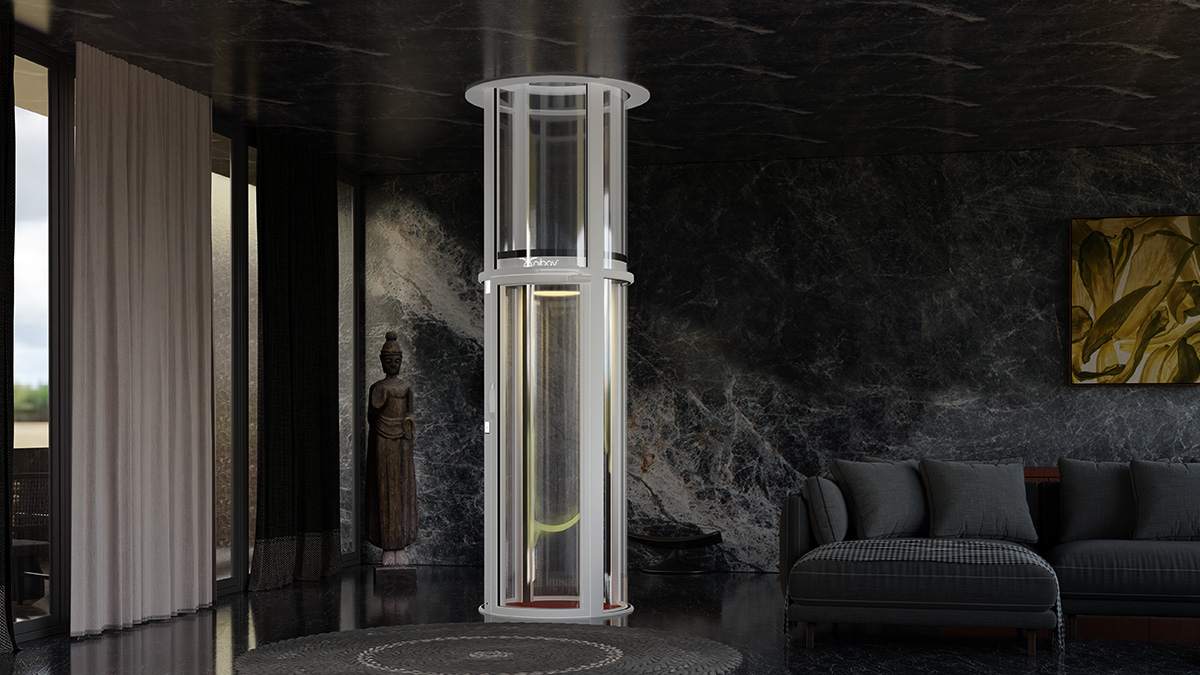
Table of Contents
- Introduction
- Why Home Elevators are Gaining Popularity in Australia
- Types of Home Elevators in Australia
- Choosing the Right Home Elevator for Your Australian Home
- Benefits of Installing Home Elevators in Australia
- Cost of Home Elevators in Australia
- Safety and Technology in Modern Home Elevators
- Competitor Comparison in Australia
- After-Sales Support and Maintenance
- Conclusion
Introduction
In today’s world, where comfort, safety, and luxury are becoming central to modern living, home elevators are no longer seen as a luxury for the elite—they have become practical additions for many Australian households. Whether you live in a stylish urban townhouse, a multi-storey villa, or a coastal residence, home elevators in Australia are reshaping the way families move around their homes.
Beyond the obvious convenience, the benefits of home elevators extend to safety for seniors, accessibility for differently-abled family members, and a significant boost in property value. With diverse models and designs available, choosing the right elevator depends on your space, lifestyle, and long-term needs.
This guide will explore the different types of home elevators in Australia, their features, and how you can select the best option for your home.
Why Home Elevators are Gaining Popularity in Australia
Convenience and Comfort
Navigating multiple floors becomes effortless, saving time and energy.
Safety and Accessibility
For elderly residents or those with mobility issues, safe home elevators provide independence and reduce the risk of falls.
Property Value Enhancement
Luxury home lifts are seen as premium upgrades, making your property more attractive to future buyers.
Aesthetic and Lifestyle Upgrade
Modern elevators are designed with sleek glass panels, custom interiors, and quiet operation—blending seamlessly with your home’s architecture.
Types of Home Elevators in Australia
There are several kinds of residential elevators available, each with unique features and installation requirements. Let’s explore them in detail.
1.Hydraulic Home Elevators
Hydraulic lifts are one of the most popular types in Australia.
How They Work: They operate using hydraulic fluid and a piston to move the cabin up and down.
Benefits:
Smooth and quiet operation.
Can carry heavy loads.
Reliable in multi-storey homes.
Considerations:
Require a machine room.
Slightly higher energy consumption.
Hydraulic home elevators in Australia are ideal for homeowners looking for durability and luxury.
2.Traction Home Elevators
Also known as cable-driven elevators, traction lifts are widely used in both residential and commercial spaces.
How They Work: A system of counterweights and steel ropes lifts and lowers the cabin.
Benefits:
Energy efficient.
Faster than hydraulic lifts.
Sleek designs with glass walls available.
Considerations:
Require more headroom and pit space.
More suitable for homes with multiple levels.
3.Pneumatic (Vacuum) Elevators
One of the latest innovations in home elevators in Australia is the pneumatic or vacuum lift.
How They Work: They use air pressure differences to move the cabin within a cylindrical shaft.
Benefits:
Space-saving design.
No need for a machine room or pit.
Eco-friendly and energy efficient.
Modern, futuristic appearance.
Considerations:
Best for 2–3 people at a time.
Higher upfront investment compared to basic lifts.
Vacuum elevators are perfect for modern Australian homes that value both function and style.
4.Chain-Driven Home Elevators
These lifts use a chain system instead of cables, making them durable and long-lasting.
Benefits:
Require less maintenance.
More compact than traction lifts.
Longer service life.
Considerations:
Can be noisier compared to hydraulic or pneumatic lifts.
5.Screw Drive Home Elevators
Screw drive lifts are common in Australian residential properties due to their simplicity.
How They Work: They use a threaded steel rod and a driving nut to move the cabin.
Benefits:
Easy to install.
Minimal space required.
Reliable and low maintenance.
Considerations:
Limited speed compared to traction or hydraulic lifts.
6.Cable Drum Elevators
These elevators use a winding drum mechanism to raise and lower the cabin.
Benefits:
Cost-effective option.
Simple installation.
Great for homes with low usage needs.
Considerations:
Require regular cable inspections.
Shorter lifespan compared to chain or traction lifts.
Choosing the Right Home Elevator for Your Australian Home
When deciding on the type of home elevator, consider these factors:
Space Availability
- Compact elevators like pneumatic lifts are ideal for smaller homes.
- Hydraulic and traction lifts need more pit space and headroom.
Usage Needs
- For daily heavy use, traction or hydraulic lifts are best.
- For occasional use, cable drum or screw drive lifts are sufficient.
Aesthetic Preferences
- Glass panel pneumatic lifts add a futuristic look.
- Custom-designed cabins can match your home interiors.
Budget
- Entry-level lifts (cable drum, screw drive) are cost-effective.
- Premium options (hydraulic, pneumatic) are higher in price but add luxury and long-term value.
Safety Features
Always ensure your chosen elevator complies with Australian safety standards, offering emergency braking, battery backup, and child-safety features.
Benefits of Installing Home Elevators in Australia
Independence for Seniors: Elderly family members can move between floors without assistance.
Accessibility for All: Great for people with disabilities, making multi-level living stress-free.
Future-Proofing Your Home: Installing an elevator now prepares your home for future needs as you age.
Increasing Property Value: Real estate agents highlight home elevators as a strong selling point.
Stylish Living: Modern designs add elegance, making your home stand out.
Cost of Home Elevators in Australia
The price of home elevators in Australia depends on type, customization, and installation complexity.
- Basic models (screw drive, cable drum): From AUD 25,000–40,000.
- Mid-range models (hydraulic, traction): From AUD 45,000–70,000.
- Premium models (pneumatic, luxury glass lifts): AUD 75,000–120,000+.
Remember to factor in:
- Installation costs.
- Annual maintenance.
- Custom cabin finishes.
Safety and Technology in Modern Home Elevators
Today’s home elevators in Australia are equipped with:
- Emergency stop buttons.
- Automatic rescue systems.
- Child-lock doors.
- Battery backup for power outages.
- Smart elevator controls with touch screens.
These innovations ensure peace of mind for every homeowner.
Competitor Comparison in Australia
Different brands offer various technologies and after-sales services. Before making a choice, consider:
- Service network availability.
- Warranty coverage.
- Customer reviews and testimonials.
- Compliance with Australian safety regulations.
After-Sales Support and Maintenance
A crucial aspect of choosing a home elevator is ongoing support. Reliable companies in Australia provide:
- Annual safety checks.
- 24/7 emergency service.
- Spare parts availability.
- Software upgrades for smart lifts.
Conclusion
Home elevators in Australia are more than just a luxury—they are a blend of safety, convenience, and style. From hydraulic and traction lifts to pneumatic and screw-drive options, homeowners can choose the best solution based on their space, budget, and lifestyle.
The benefits of home elevators go beyond mobility—they elevate your home’s functionality, comfort, and market value. With modern designs, advanced technology, and strong after-sales service, installing a home elevator is a long-term investment in both convenience and quality of life.
If you are planning to upgrade your home with a safe, reliable, and stylish lift, now is the perfect time to explore the wide range of home elevators in Australia.

Hannah Mitchell
Our Nibav home lift has become the highlight of our home. The panoramic glass cabin looks sleek and modern, and the ride quality is incredibly smooth. It’s quiet, safe, and energy-efficient—everything we wanted for a multi-storey home. The team was very professional from start to finish.
Andrew Collins
I’m amazed by how well the Nibav lift integrates with our interiors. It doesn’t look bulky or mechanical—it’s a design feature that adds value to the entire house. The engineering feels solid and safe, and it runs so quietly that it doesn’t disturb us at all. Excellent product and service.